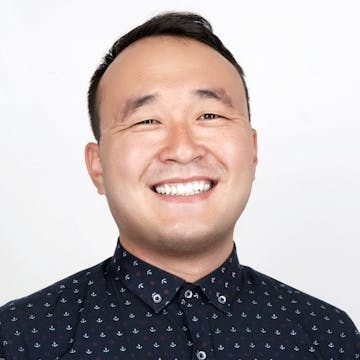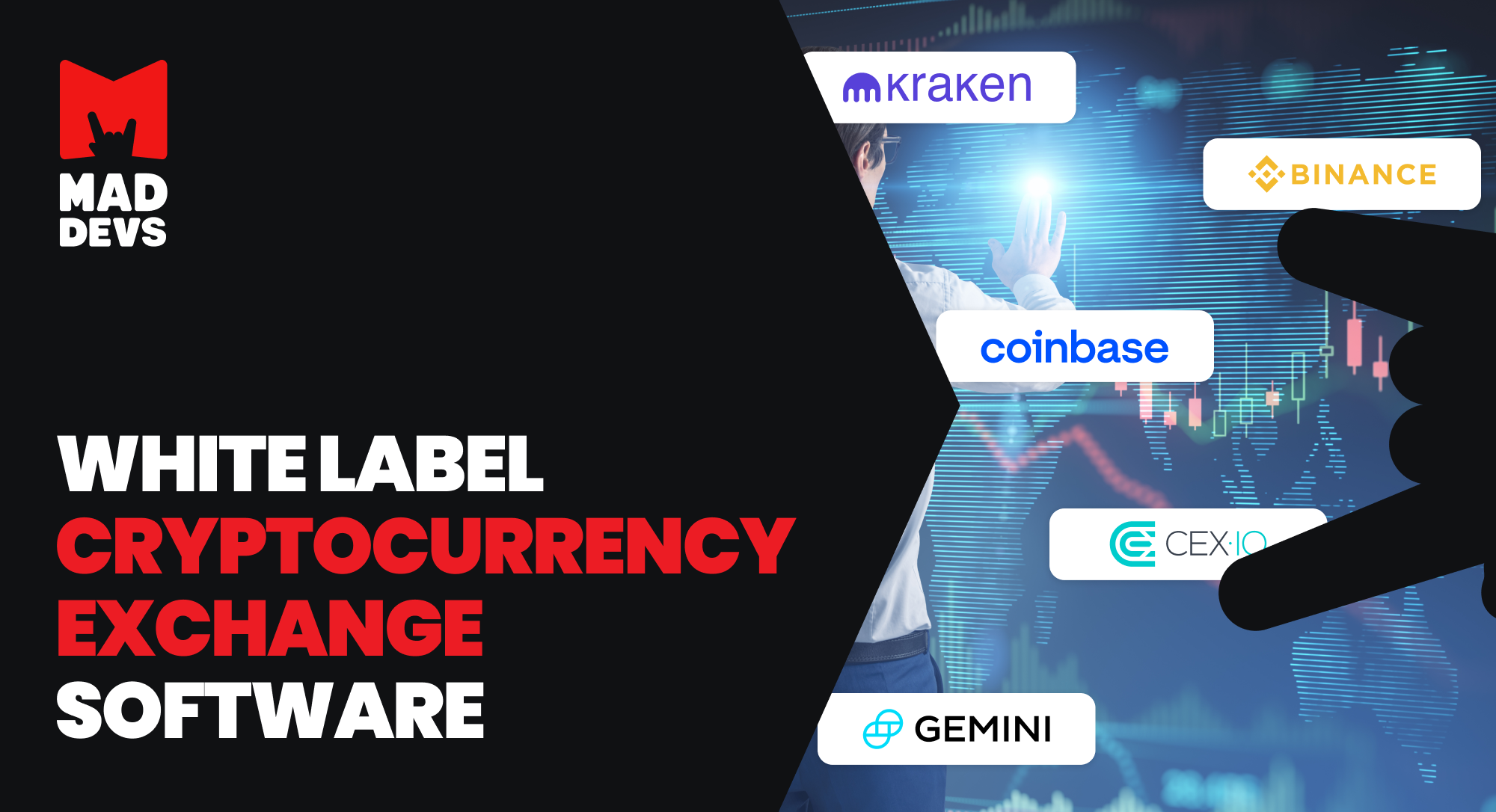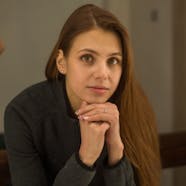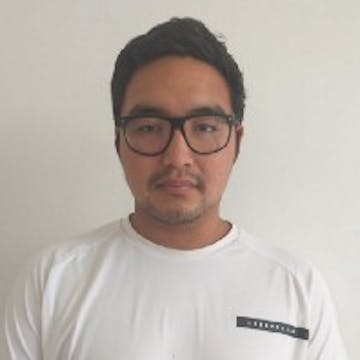Here are discussing some of the best DeFi analytics tools that help investors understand and keep track of the broader DeFi ecosystem.
We will showcase the nine most useful tools for every investor in DeFi and describe the process of developing a tool that displays DeFi statistics.
Introduction
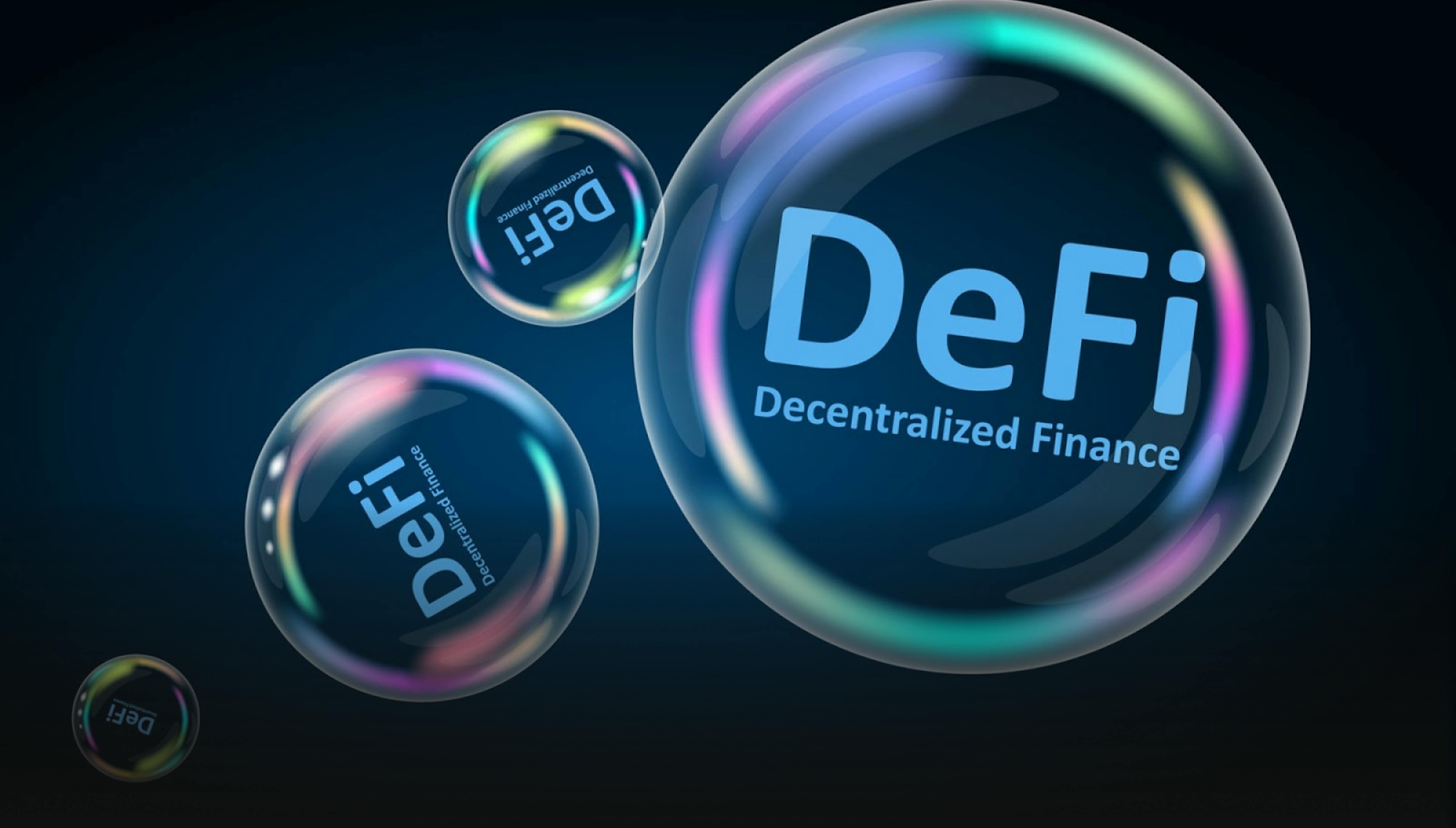
DeFi in 2022, everyone investor must know because Decentralized Finance is taking the world by storm. DeFi has shown us that decentralizing financial services at scale is possible and offers lots of advantages, such as removing intermediaries and brokers . So here, we will discuss the most useful tools for every investor in DeFi and how to create your DeFi platform.
What is DeFi?
Centralized Finance (CeFi) was the standard for trading cryptos before introducing Decentralized Finance, or DeFi. Currently, most cryptocurrencies are traded and exchanged on CeFi. As a central exchange handles all cryptocurrency trades in CeFi, users don't have access to their wallets through their private keys.
In centralized finance, all crypto trading orders are routed through a central exchange (like Binance, Coinbase, etc.). Users create accounts and transfer and receive funds primarily using the same platform on these platforms. Users do not own their cryptocurrencies when buying/selling cryptocurrencies via a centralized exchange.
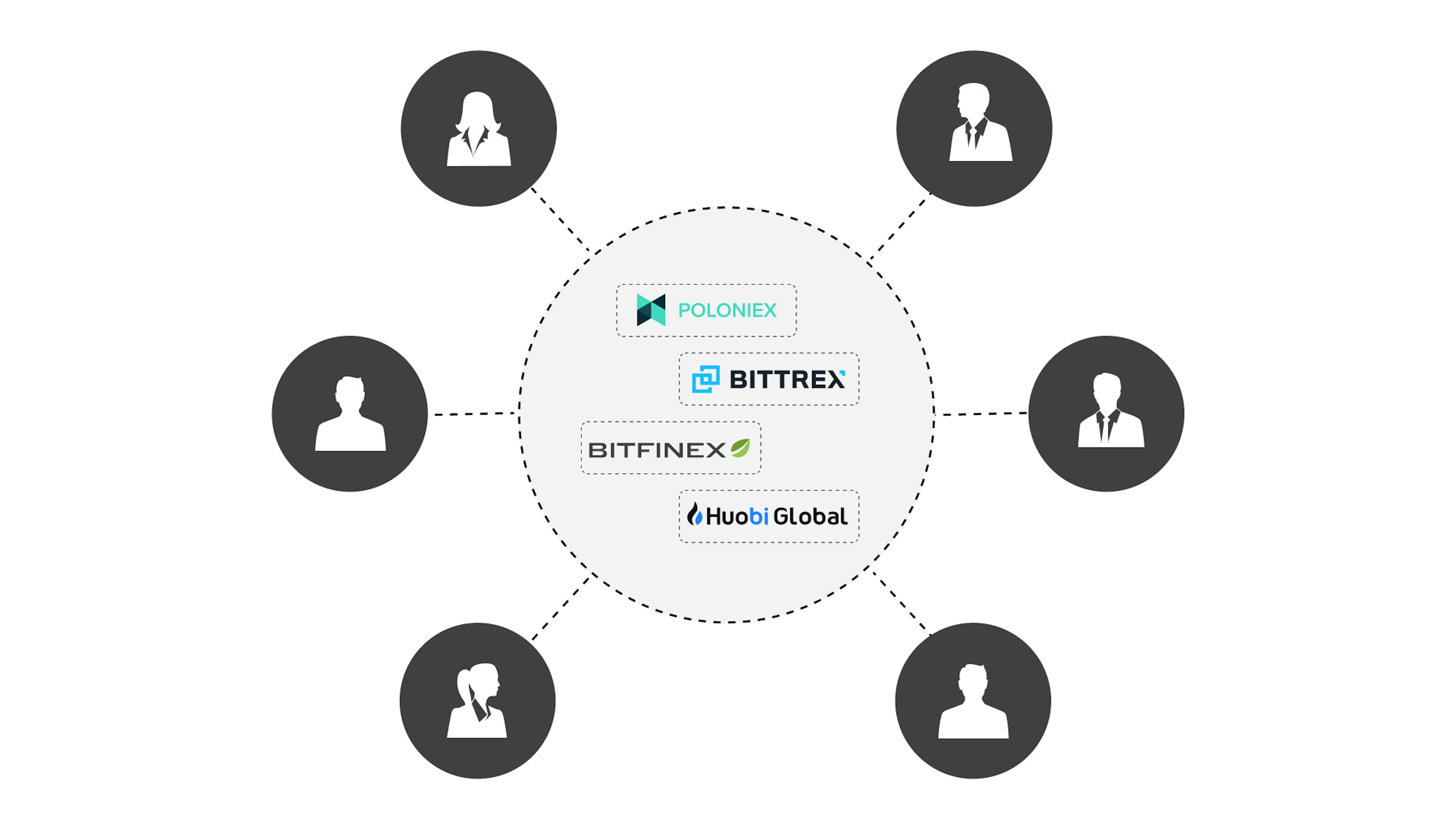
These exchanges also support lending, borrowing, margin trading, and other services. Moreover, it specifies which coins are listed for trading and what fees are associated with trading on the exchange.
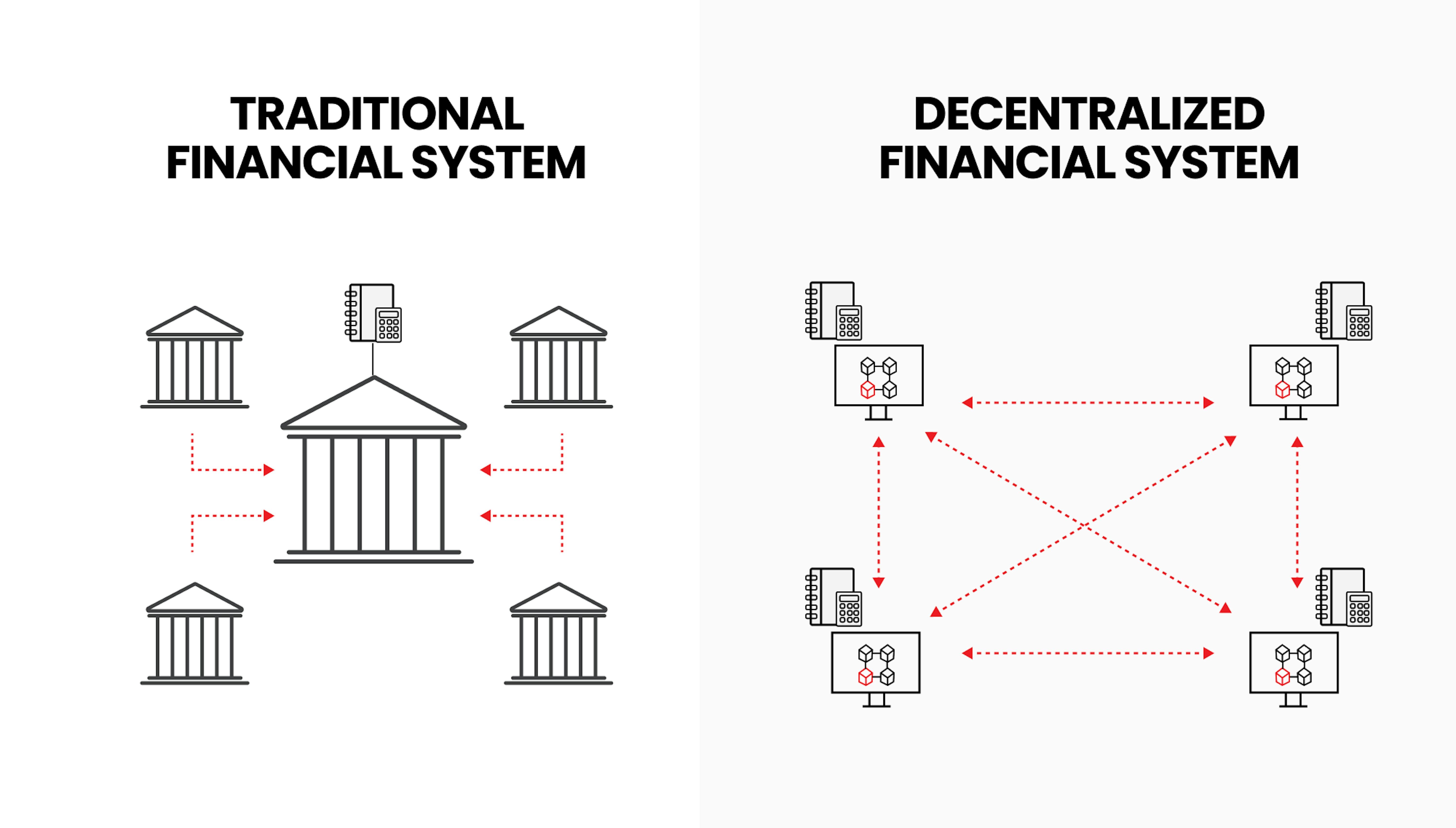
First of all, it is worth noting that Decentralized Finance (DeFi) is a paradigm based on a service that provides financial assistance and complies with the principles of DeFi:
- Open-source
- Accessibility for each user
- Financial transparency
Smart contracts and decentralized applications, or DApps, are built on the blockchain in DeFi. Platforms like Ethereum allow developers to create complex algorithms for storing and managing digital assets, and all operations are carried out without intermediaries.
Decentralizing financial services is closely linked to Web 3.0, the next evolution of the Internet. As network technologies continue to develop, user information no longer belongs to them, and few well-known technology companies regulate the Internet. Blockchain and smart contracts can challenge the traditional financial system. They provide equal opportunities for all users. DeFi platforms will grow rapidly as new financial technologies are developed.
With DeFi, no centralized authority is involved in any part of the process. No exchange is involved in the decentralized exchange. A blockchain platform is used to develop applications that automate the entire process. Applications and technology, such as DApps, run on top of blockchains to provide access to anyone with an internet connection.
The main advantage of DeFi over CeFi is that the user has complete control over their assets and owns the wallet key pair. Decentralized finance also creates a fair and transparent financial system where anyone can participate. In addition to offering all the traditional bank services, it can enable an entirely new approach to banking. Blockchain technology allows unbanked people to access financial and banking services.
DeFi aims to build an open-source, permissionless, and transparent financial service ecosystem. This system offers services, including borrowing, yield farming, crypto lending, asset storage, etc.
Even though DeFi supports all crypto platforms, Ethereum is currently the focus of DeFi development and transactions. DeFi can capitalize on the intrinsic traits of Ethereum for delivering desired functionalities. DeFi focuses on some properties that can be found only with Ethereum.
What is DeFi used for?
DeFi is a promising field with many financial service providers and customer opportunities. As the area is fragmented, it's challenging to track DeFi services. All projects can be found defiprime.com or defirate.com. Some services like app.defisaver.com provide data for the analysis of decentralized finance. The selection of top DeFi tools is essential to ensure that you can access the actual value benefits of DeFi seamlessly.

As DeFi's primary goal is to become an alternative to the banking sector and replace the traditional technologies of the current financial system with open-source protocols, the services are usually divided into several popular working with finance areas:
- Loans and deposits. One owner of a cryptocurrency can lend it to another user for a specified period at a percentage against the security of a cryptocurrency.
- Decentralized exchanges. Instead of sending funds to an exchange wallet, the DEX (decentralized exchange) creates an environment for the direct sale of value between users.
- Investment. High transparency makes investing less risky and allows users to earn on assets that they hold for the long term.
What are the benefits of DeFi?
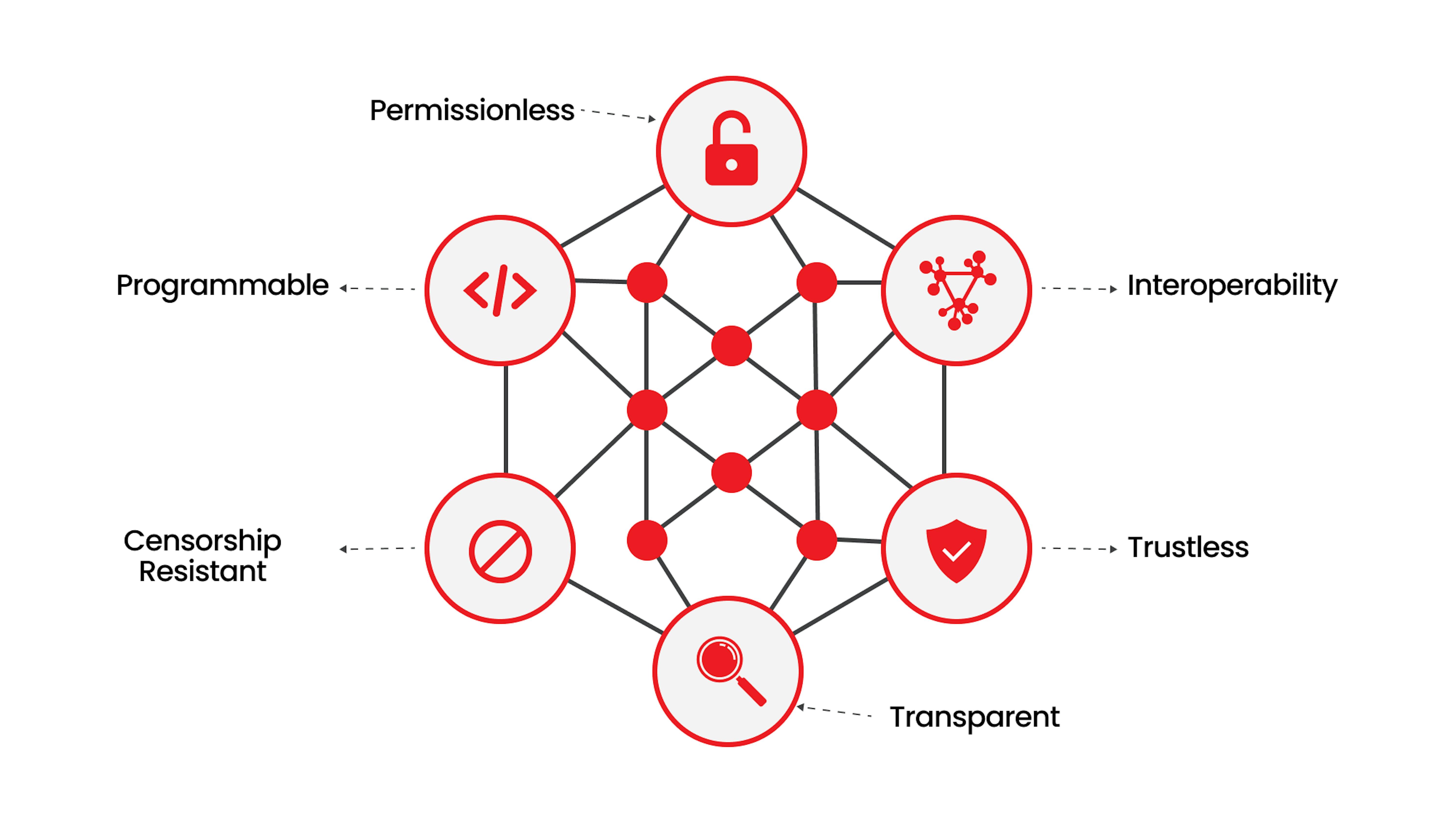
The main advantages of DeFi include:
- Permissionless
All DeFi services can be accessed without a third party's permission.
- Interoperability
Interoperability is one of the most exciting features of decentralized finance tools. In other words, it implies that DeFi services can work together to develop new servers and products.
- Trustless
Smart contracts offer a transparent environment where all transactions and interactions are visible. The underlying blockchain ensures the security of all transactions and interactions in DeFi.
- Transparency
DeFi ensures that all smart contracts are available for analysis and verification by tracking all user interactions.
- Censorship resistance
DeFi services do not discriminate against anyone based on nationality, political views, or gender.
- Programmability
As a DeFi solution, any service that offers the flexibility of encoding in a smart contract is possible.
How does DeFi work?
In addition to its native cryptocurrency: Ether (or ETH), Ethereum is the platform on which most DeFi services run. "Smart contracts," which automate and then monitor the terms of an agreement between each party of the transaction, are used to store DeFi services on the blockchain. This keeps trades fair, transparent, and secure.
Ethereum also hosts most DApps and protocols on its expansive technology network. Separate from standard crypto, Ethereum also hosts trading for digital assets known as stablecoins, which are digital assets pegged to fiat currencies and therefore less volatile.
Several DeFi tools do not support all protocols and DeFi tokens or platforms, so each investor is likely to choose one instrument at a time. Through personal wallets and trading services that cater to individuals, DeFi applications give users more control over their money.
What are DeFi products?
DeFi product development aims to reDeFine traditional financial services such as lending, trading, investment, payment, insurance, and others by disrupting the role of intermediaries.
Because of how DeFi products are designed, they are effectively modular – meaning that applications and protocols can be added to and combined. This allows for much greater flexibility and variety in the services you can offer and the benefits offered by blockchain technology.
What are some DeFi platforms?
Regardless of users' crypto fluency or investment experience, users should consider these handy DeFi tools. These tools can help users with everything from investment strategy - like yield farming or lending to a DEX - to asset management. This list includes new or powerful tools for tracking and trading your DeFi assets.
1inch
- Founded: April 2021
- Starting Price: Free
- Market cap: 423,368,535.28 $
The 1Inch DEX liquidity aggregator, which used to rank among the top 5 DEXs at times, is primarily responsible for its reputation. The DeFi developers in 2021 have decided to take their push for higher DeFi adoption rates and more flexible accessibility up a notch by creating a new lightweight wallet designed to tackle crypto's most painful vector, user experience. But, it is not licensed to operate in the U.S.

Currently, it consists of three main components:
- Across multiple liquidity sources, it offers cost-efficient and secure swap transactions.
- 1inch Liquidity Protocol protects users from front-running attacks, providing opportunities for liquidity providers.
- DeFi's 1inch Limit Order Protocol facilitates innovative and flexible limit order swaps.
It supports Ethereum, Binance Smart Chain, Polygon, Optimistic Ethereum, Arbitrum, Avalanche, and Gnosis Chain as liquidity sources. 1inch Wallet is a multichain mobile platform that offers an easy-to-navigate interface with secure storing, transaction and staking capabilities.
Coinbase
- Founded: October 2012
- Starting Price: Free
- Market cap: 15.69B $
Coinbase is one of the most accessible and widely used platforms for buying, selling, and managing cryptocurrencies.
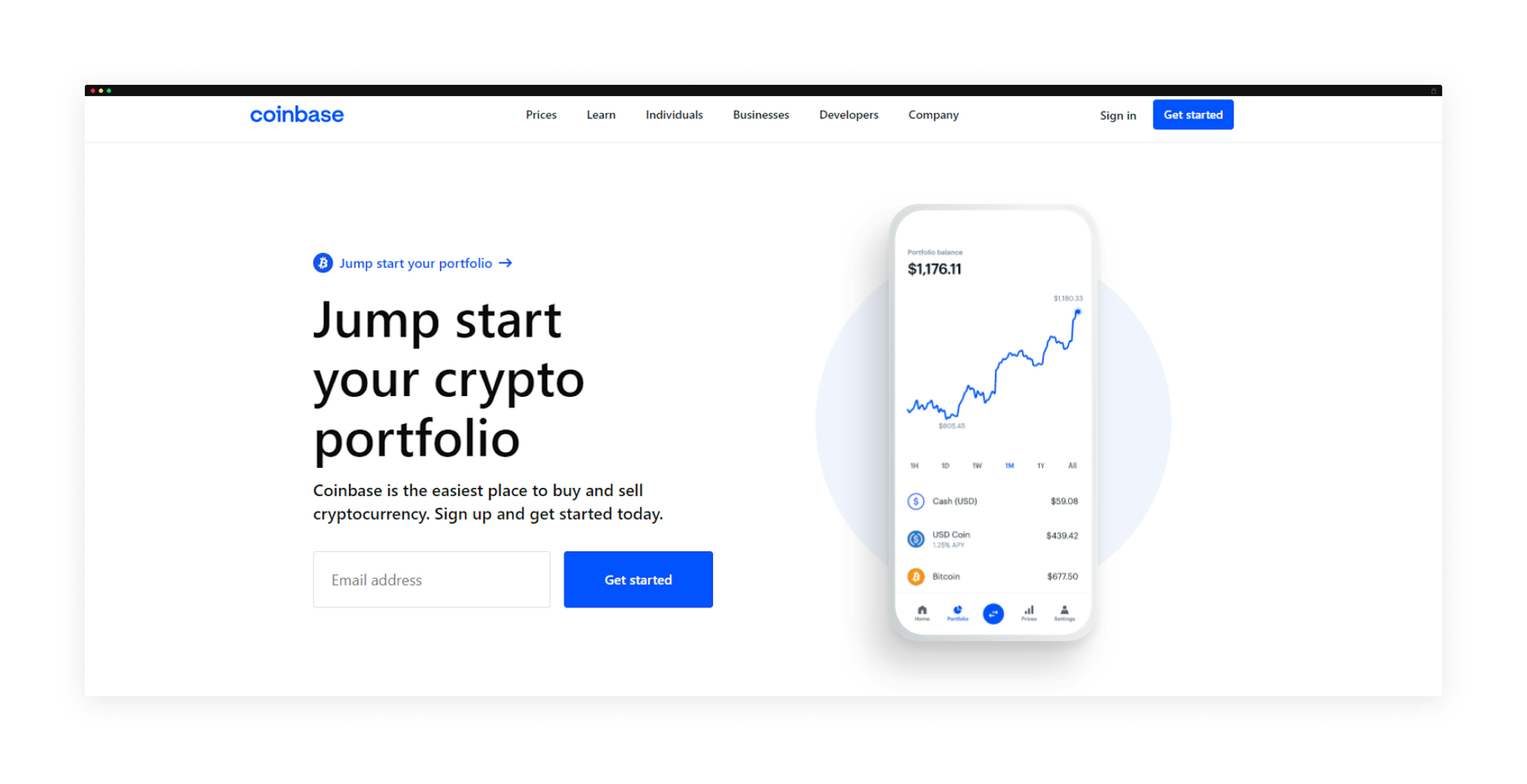
Coinbase Wallet is an Ethereum-based multi-coin wallet. It is a good tool for beginners in decentralized finance. Users can securely store and trade crypto funds and assets directly on their devices. Coinbase Wallet does not require a Coinbase account.
The Coinbase Wallet allows users to store all their crypto, NFTs, and DApps in one place. On Coinbase Wallet, the user has complete control over the wallet and has access to the private keys.
DeFi Llama
- Founded: 2022
- Starting Price: Free
According to the project website, DeFi Llama is the largest total value locked (TVL) aggregator for DeFi. With DeFiLlama, you can track protocol statistics such as TVL, 1h change, 7d change, and more. Data from DeFi Llama is fully open-source and maintained by a team of passionate individuals and protocol contributors. DeFi Llama focuses on accurate and transparent data. DeFi Llama provides statistics that include the total value locked and changes over different time frames.
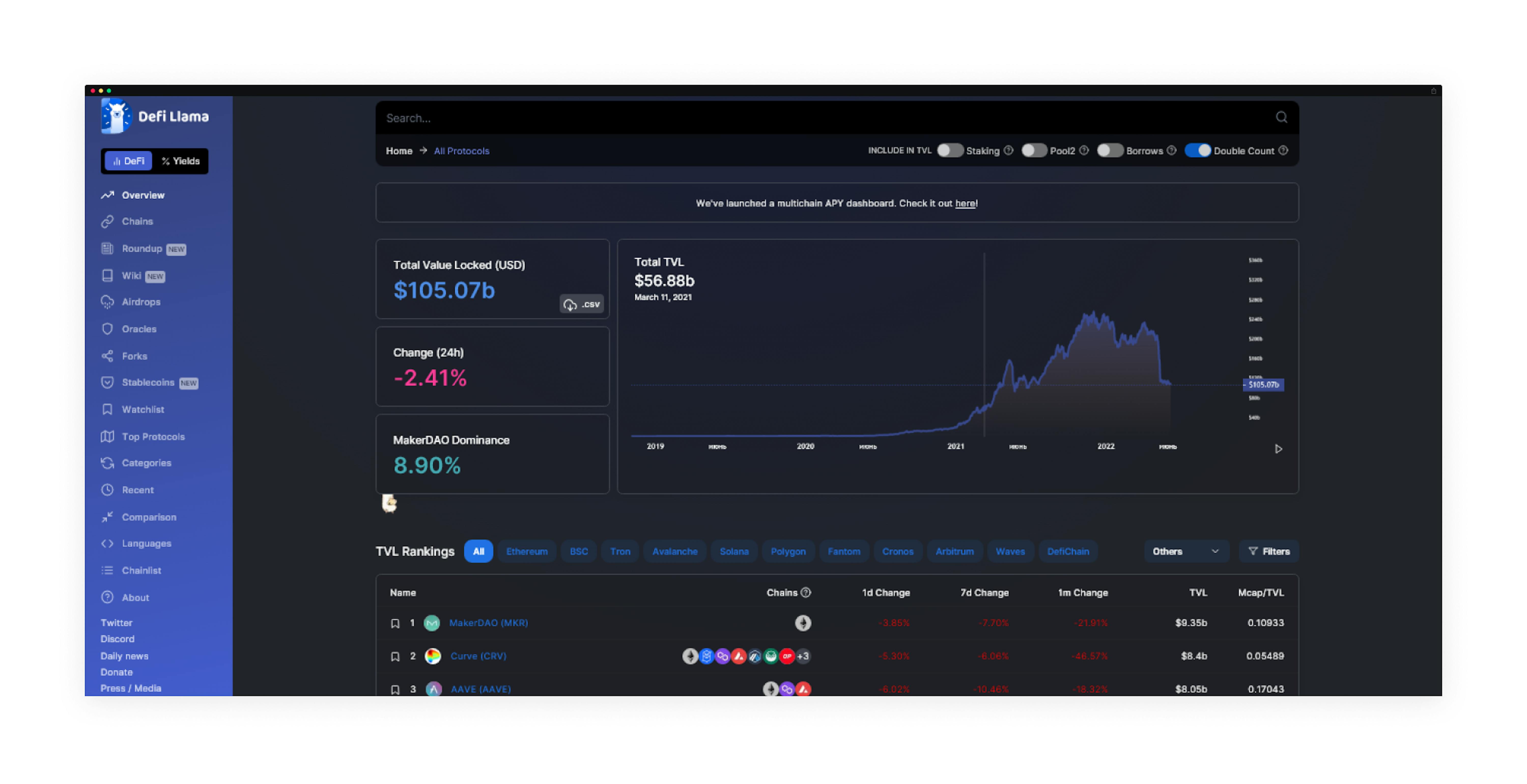
Based on DeFi apps, DeFi Llama displays current cryptocurrency prices. As of 2021, the site tracks more than 500 crypto coins, their blockchains, recent price changes, and total locked value. The tool covers all DeFi protocols currently available, including Ethereum, Binance Smart Chain (BSC), Solana, Avalanche, Polygon, etc. The full list of supported chains can be found here.
Also, DeFi Llama helps users analyze protocols based on several categories:
- Airdrops
- DEXs
- Assets
- Lending
- Yield
- Insurance
- Options
- Staking
DeFi Pulse
- Founded: September 2020
- Starting Price: Free
- Market cap: 53,774,466.88 $
DeFi Pulse is a website with a leaderboard of all DeFi applications. This resource can help users track all their DeFi assets and projects. The home page features a handy overview of the whole DeFi market.
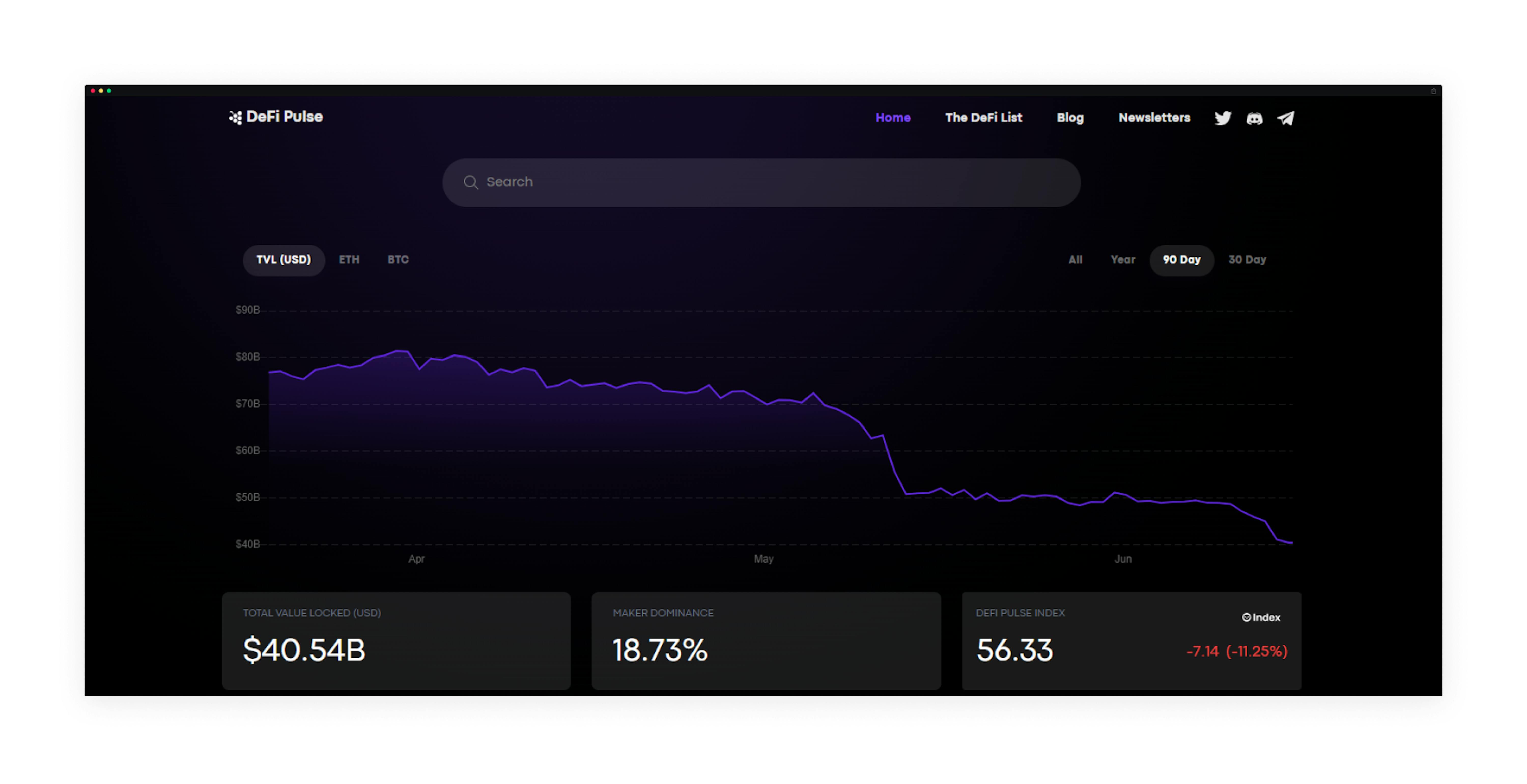
Aside from providing the latest analytics and rankings on the various DeFi protocols, DeFi Pulse offers The DeFi List (a list of the best DeFi resources) and DeFi Pulse Farmer (a newsletter about the latest opportunities in the space) for anyone to access and learn from.
The creators of DeFi Pulse describe decentralized finance as “financial software built on the blockchain that can be pieced together like Money Legos.”
Dune Analytics
- Founded: 2018
- Starting Price: $390 per user per month (DUNE PRO plan), Free Version available.
- Market cap: 69,420,000 $
In March 2019, Fredrik Haga and Mats Olsen founded Dune Analytics. This is an effective tool for tracking and obtaining reliable data on many elements of decentralized finance. It is a web-based platform for accessing Ethereum data using simple SQL queries from pre-populated databases, so users can just query the database.
A user can create a query by selecting "new query" and typing SQL code.
The "Discover" button allows users to see popular dashboards or search for specific data in the search field. The data could be displayed as lists, graphs, or bar charts.
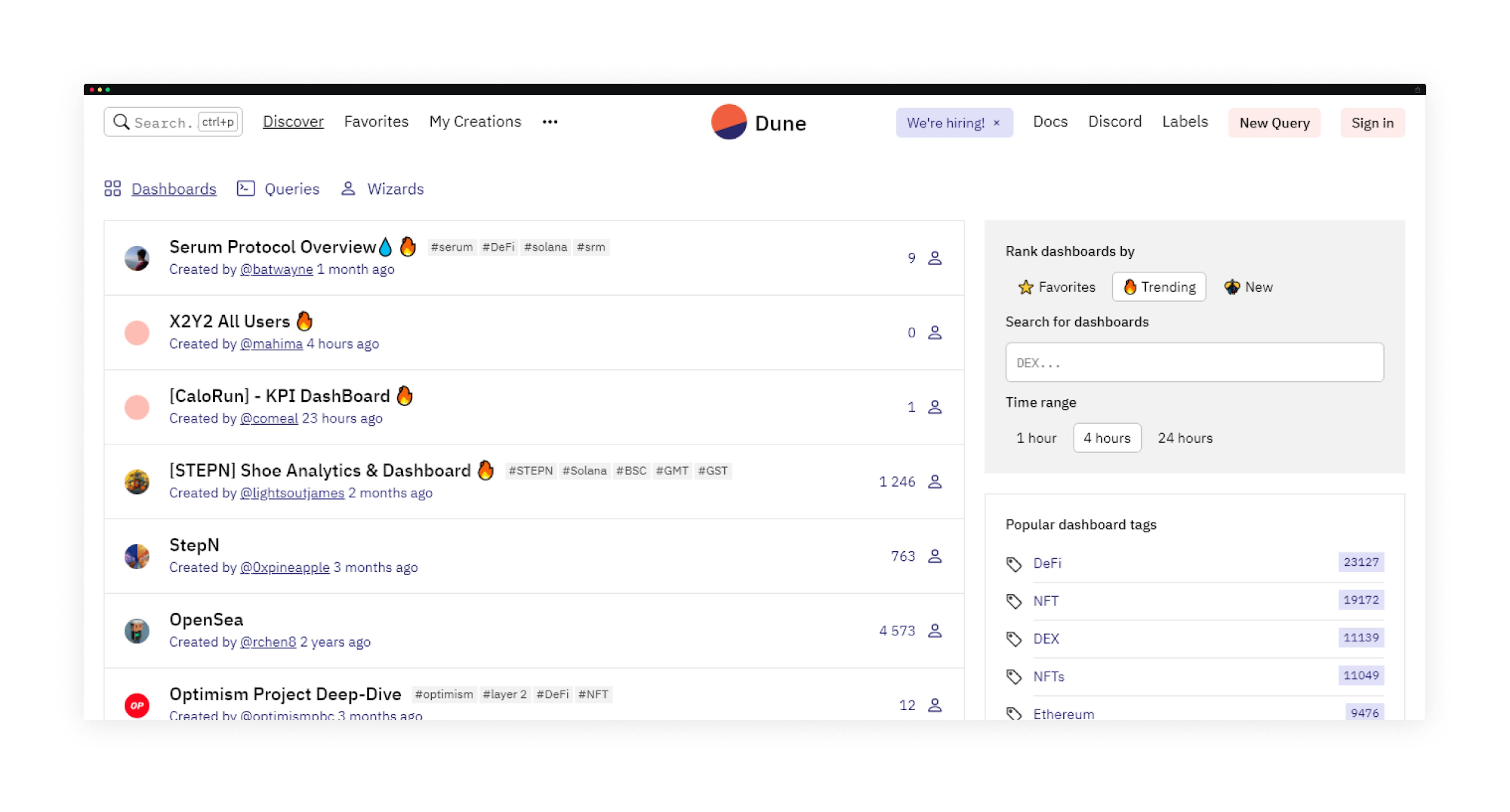
The data is limited. Dune supports Ethereum, Polygon, BNB Chain, Optimism, and Gnosis Chain. Dune supports all smart contracts written on those blockchains.
The query is refreshed every time the user checks it. Refreshing, however, will take some time because a user will be placed in a line. Because of this, users’ information may be a few minutes or hours old.
There are two plans on the Dune analytics platform: The free and the pro plans. With the free plan, you can:
- Search queries against existing databases.
- Write new queries if your request is not on the premade queries list.
- Create visualizations(such as charts, graphs, and lines) and dashboards.
- Share your charts for public use and review.
- Create forks of preexisting community queries.
- Run three queries in parallel.
The pro plan is at a fixed $390 per month per user. With the Dune Pro plan, you enjoy certain perks, of course. You can:
- Keeps query private. Thus, your queries will be known by you and you alone.
- Remove watermarks from queries and visualizations.
- Export results to CSV
- Get qualitative results without having to wait in a queue
- Run six queries in parallel.
MakerDAO
- Founded: December 2017
- Starting Price: Free
- Market cap: 1,170,922,355.38 $
MakerDAO was started in 2014 by the Maker Foundation. From 2015 to 2017, the global development team built the Maker ecosystem. The native token of MakerDAO is MKR. MakerDAO is one of the long-established DeFi players, using the Ethereum open-source blockchain and a decentralized autonomous organization (DAO). This project has $19.3 billion in total value locked in – approximately 18% of the dollars invested in DeFi projects today.

The MakerDAO platform is used for lending stablecoin, DAI, as part of a global community. The Maker Vault generates a loan when users deposit supported ETH, represented in DAI, and can then accrue interest.
The price of DAI is usually equal to 1 USD because it is soft-pegged to the United States Dollar (USD). DAI is not backed by the USD, but by other currencies, such as those used in the Maker protocol as collateral for the DAI value.
In the system, MKR represents the voting power of the network participants. Additionally, it allows them to participate in decision-making that affects the network. While anyone can make proposals, only holders of MKR can vote.
MKR tokens can also be transferred outside the MakerDAO system, which means that voting rights can be purchased.
To maintain DAI's capitalization, MKR tokens can be minted or burned. Smart contracts automate this process.
MetaMask
- Founded: September 2016
- Starting Price: Free
- Market cap: 64,830,834,910,480.42 $
MetaMask is a cryptocurrency wallet that operates as a browser extension on major browsers, such as Brave, Chrome, Microsoft Edge, and Firefox. It’s a powerful tool that enables users to interact with the entire Ethereum ecosystem and its many decentralized applications (DApps).
MetaMask provides users with a key vault, secure login, token wallet, and token exchange for maximum security. Additionally, there is a unique backup system built into the wallet. With this smartphone app, users can securely manage digital assets. In addition to Ethereum, the wallet supports ERC-721 tokens used for NFTs.
Using MetaMask to connect to multiple decentralized crypto exchanges (DEXs) is extremely easy for DeFi users, making it a critical DeFi tool for interoperability among different DeFi platforms.
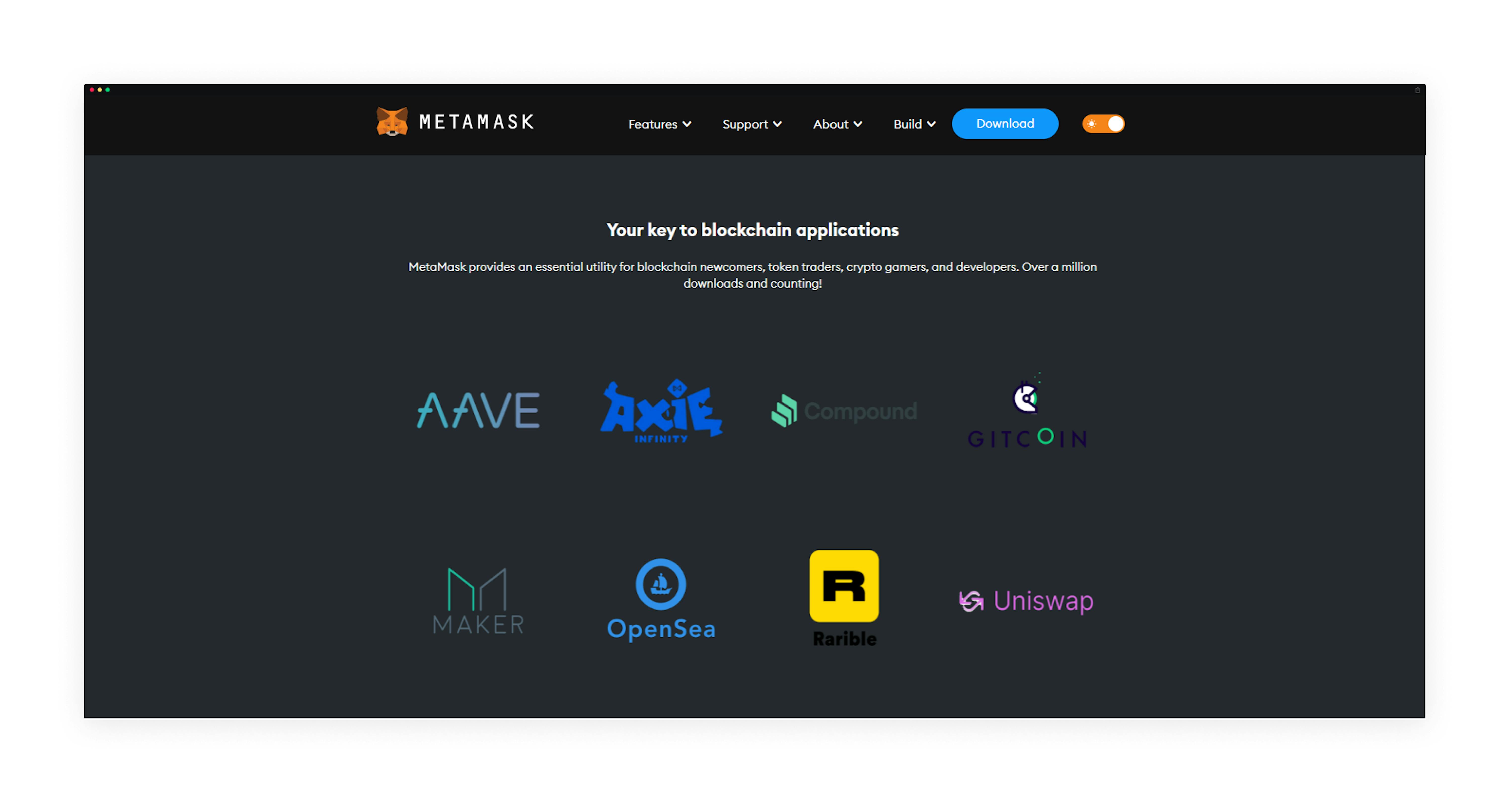
With MetaMask, users do not have to download the entire blockchain to their device. Instead, MetaMask links directly with decentralized exchanges, enabling seamless interoperability.
MultiFarm
- Founded: 2021
- Starting Price: Free
- Market cap: 97,733.07 $
To make DeFi more accessible to everyone, MultiFarm is an alpha product intended to be the leading yield discovery platform.
On the official MultiFarm website, the company believes in the potential of DeFi to transform finance and put value back in the hands of individuals. The goal of MultiFarms is to become the go-to place for everything related to DeFi investing. The MultiFarm team curates data, enables investments, and helps users maximize their yields.
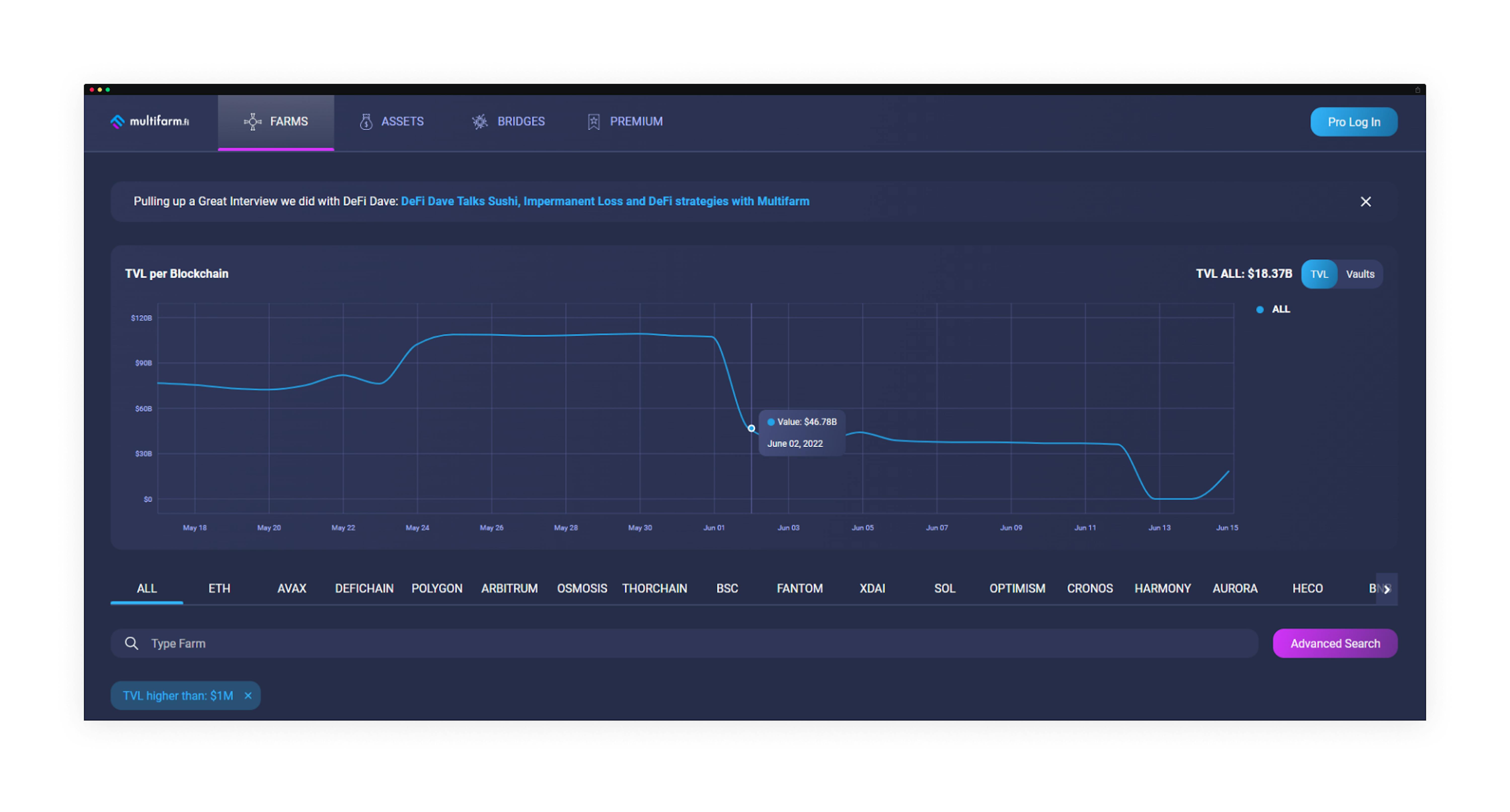
Zerion
- Found in: 2016
- Starting Price: £99/Month & Lifetime Option
- Market cap: 20,512.388 $
Zerion, a noncustodial DeFi interface, was founded in 2016. This platform is known for its ease of use, security, and simplicity. It allows users to lend, invest, and borrow digital assets across more than 60 protocols. Due to the minimal-invasive approach, third parties cannot access private keys.
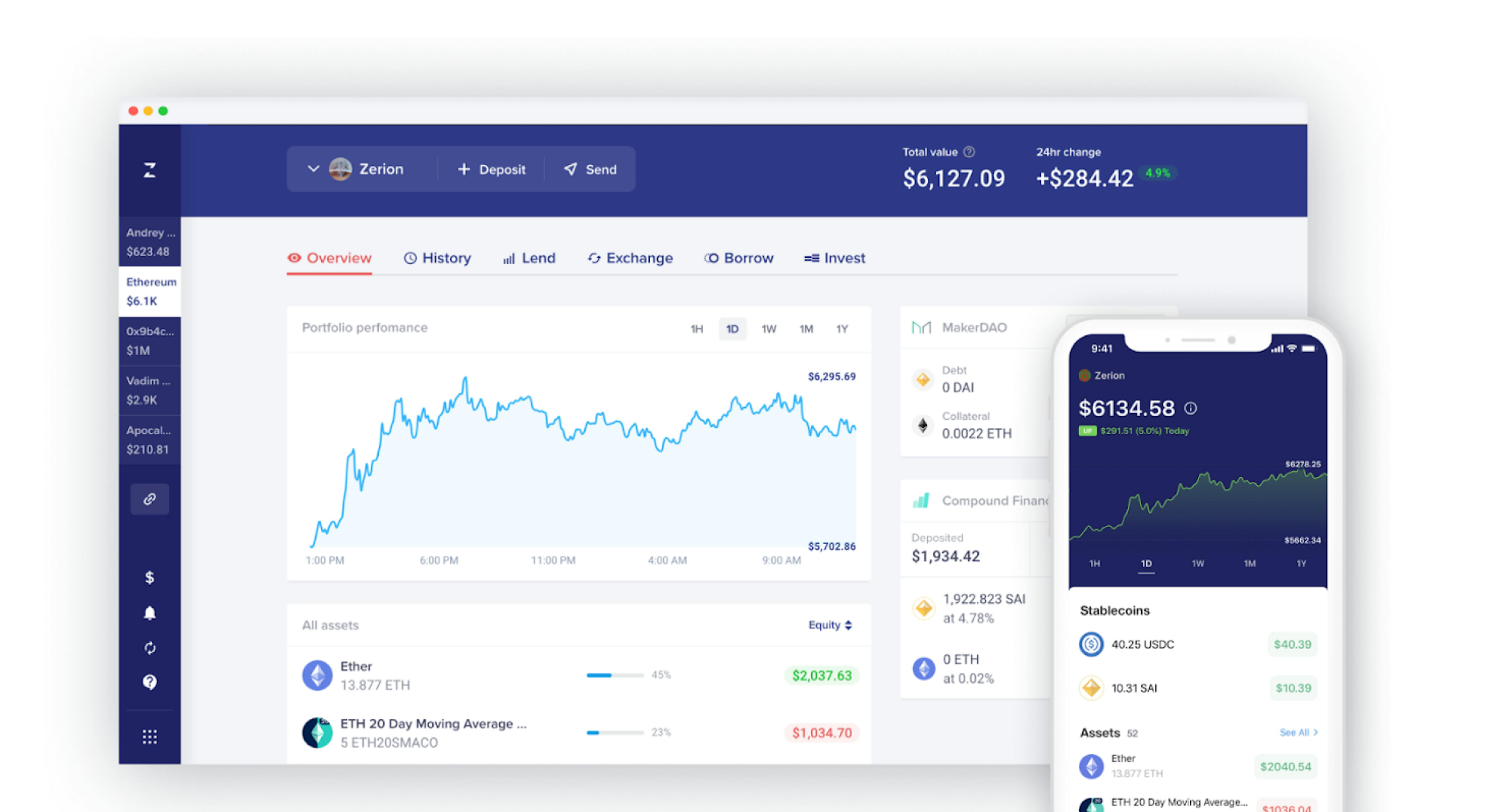
Zerion allows users to manage and grow their entire DeFi portfolio in one place. Traders can trade DeFi tokens, move assets across chains, and display their NFT collections all in one place.
Multiple networks are supported, including Polygon, Optimism, Arbitrum, and BSC. Zerion aggregates all major decentralized exchanges without commissions.
Zerion's operations are generally free, but the platform charges a fee when exchanging cryptocurrencies. The fee depends on the pair being exchanged.
What is the best DeFi platform?
Therefore, DeFi is the next big wave in cryptocurrency, as it allows users to replicate traditional finance features with cryptocurrency. You can lend, borrow, and even earn interest by staking your coins.
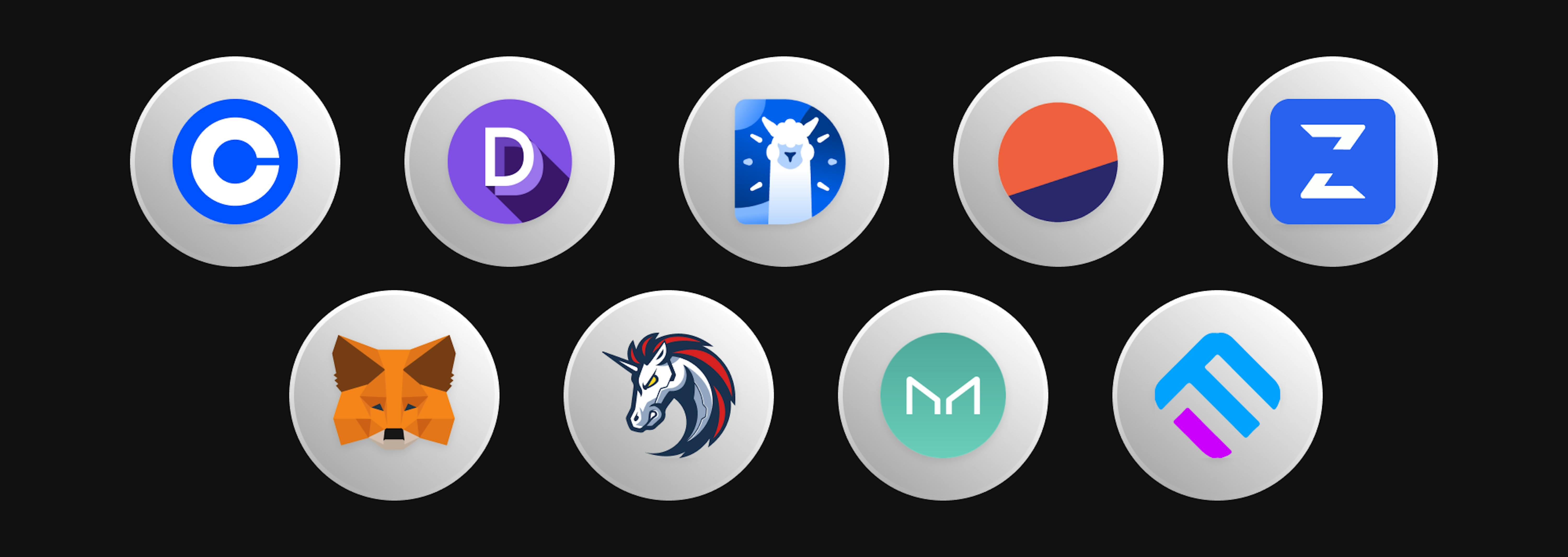
Above, we reviewed the general information you need to know about DeFi platforms:
- 1inch – an aggregator that scours the cryptocurrency market.
- Coinbase – one of the safest digital currency wallets.
- DeFi Llama – multi-chain TVL stats dashboard.
- DeFi Pulse – find the latest analytics and rankings of DeFi protocols.
- Dune Analytics – allows anyone to publish and access crypto trends in real-time.
- MarkerDAO – prominent long-standing DeFi player.
- MetaMask – a safe browser-based crypto wallet app.
- MultiFarm – a product that aims to be the leading yield discovery platform.
- Zerion – the simplest way to track and manage a DeFi portfolio.
The best DeFi platforms enable users to put their cryptocurrency to work for them and earn. Dozens of projects with excellent capabilities push the crypto further. Our selection of the top DeFi crypto projects is not financial advice but rather a showcase of the emerging capabilities in the market.
How to build a DeFi analytics tool?
So, if you are ready for competition with other imaginable flavors of crypto swaps, let’s see what you need to create a unique DeFi platform. Every detail can affect your project's future, so it’s worth getting things straight before the development process starts.
Why create your own DeFi crypto exchange?
Developing DeFi platforms is a challenging task that requires deep knowledge of finance, blockchain, and cybersecurity. Therefore, the creation of such software is best entrusted to a technical partner with the appropriate staff and development experience, such as Mad Devs.
Our company is ready to develop various solutions in blockchain, fintech, and DeFi - from smart contracts to decentralized cryptocurrency exchanges. Contact us via [email protected] to start collaborating.
Stages of DeFi exchange development
The development of the DeFi exchange platform is similar to creating a crypto exchange that focuses on centralization. In any software development project, you have to go through all the basic steps:
- Discovery
- Prototyping
- Development
- UX/UI design development
- Development of smart contracts
- Front-end and back-end development
- DeFi product integrations - QA
- Maintenance
Discovery
The development of a DeFi platform, like the launch of any other similar project, begins with business analysis. Together with a technical partner, you define the overall concept, tasks, technical requirements, and functionality of the project. This information will help you in the future to select the optimal technology stack and build the product architecture, as well as develop design requirements.
Prototyping
In this step, you need to clearly define the requirements for the design and technical aspects of the software. Developing platform design requirements involves creating an overall UX strategy, multiple user personas, user flows, information architecture, low-fidelity wireframes, etc.
Following that, you have to figure out the technical requirements and find a compromise between meeting the needs of the end-users and your business goals. This should lead to the following: the structure of the overall data flow, the platform’s architecture, the principles of quality assurance, the stack of technologies, and the development plan with an estimated time and cost.
Development
UX/UI design development
Every application requires UX / UI design. DeFi platforms should be as simple and clear as possible because their end users are ordinary people with no prior knowledge of blockchain and decentralized finance. Working with your service should be no different from traditional applications for asset management, lending, insurance, or investment.
Development of smart contracts
Most of the time, the correctness, reliability, and security of your DeFi platform will depend on the quality of smart contracts. All DeFi products are based on them since they contain all the system’s logic. Furthermore, smart contracts can increase your DeFi platform's security and make it more vulnerable to hacker attacks, depending on how they are implemented.
Developing smart contracts for decentralized finance is an extremely difficult task since they must describe all possible scenarios for user interaction with the platform. At the same time, they must be transparent and secure. In addition, it is also desirable to make them configurable so that you can update some smart contract terms without additional deployments. Therefore, smart contracts should be based on open-source code and have clear logic. An experienced development team is therefore crucial.
Front-end and back-end development
At this stage, the development team brings to life the UX/UI design, functionality, and back end of your platform. This is the responsibility of front-end, back-end, blockchain, and mobile developers.
DeFi product integrations
Your platform will be connected to other DeFi protocols, such as cryptocurrency networks, payment gateways, and/or cryptocurrency exchanges, because only in this way will you be able to create a financial ecosystem that will be of interest to potential users. The difficulty is that such protocols usually have different functions and interfaces, so you need to conduct a preliminary analysis to make sure that the integrations you need are compatible and secure. This also means that your development team will need to examine the code and architecture of another DeFi before starting the integration.
QA
After implementing all the main features, it's time to test your platform. This includes checking the code for usability and functionality, and checking the system’s performance under all possible load scenarios. In addition, you should also make sure that all your smart contracts work properly and do not contain "holes" to steal money and confidential user data. Internal testing is not enough here. It is also necessary to conduct an independent audit of smart contracts.
According to the last research, 15 DeFi platform hacks in 2020 caused users to lose $120 million. And almost all of this money was stolen through smart contract hacks. So take testing them seriously.
Maintenance
We recommend setting up processes and infrastructure for Web 2.0 and mobile software releases to ensure continuous development. To keep adapting the product to market realities, you need this to keep iterating.
It's hard to update truly decentralized applications, such as DEXes. In any case, not in the same way as regular software.
What should you expect as challenges?
When you decide to develop your application and encounter several standard development issues, you may encounter challenges.
Processes we build and risks we prevent
Blockchain technology must follow certain principles to be open, transparent, and secure. This technology carries great financial responsibility when used as a financial instrument. Therefore, we pay great attention to every process at every stage of development.
If you want to know more about our best practices, we have collected them in our Process Ebook. Get it free and enjoy your reading!
Summary
Cryptocurrency investors have different strategies and portfolios when deciding which DeFi tools to use. DeFi growth is the new word of transformation in the world of cryptocurrency. Herein, we explained what DeFi is and discussed the best nine analytics tools.
There are so many analytical tools on the market today. To start your DeFi company, you must first determine your business needs. Building a global DeFi ecosystem requires knowing how each participant can contribute.
You can boost your profits by contacting the Mad Devs team. We will help you do market research, targeted marketing campaigns, customer segmentation, revaluation of your DeFi company projects, etc. Start your DeFi development process today.
